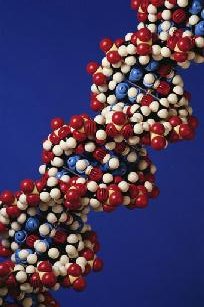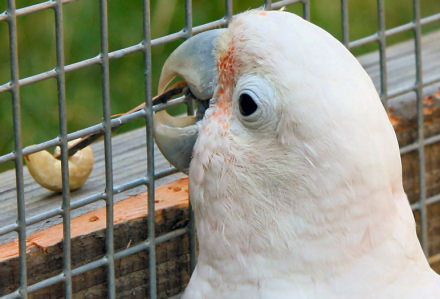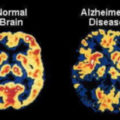
Howard Hughes Medical Institute (HHMI) researchers have discovered that clays may have been the catalysts that spurred the spontaneous assembly of fatty acids into the small sacs that ultimately evolved into the first living cells.
HHMI investigator Jack W. Szostak and colleagues Martin M. Hanczyc and Shelly M. Fujikawa at Massachusetts General Hospital also demonstrated that these vesicles could be induced to grow and to split into separate vesicles under laboratory conditions. They reported their studies in the journal Science.
Szostak and his colleagues were prompted to perform their experiments by the earlier work of other researchers who had found that clays could catalyze the chemical reactions needed to construct RNA from building blocks called nucleotides. They reasoned that if clays could foster the formation of vesicles, it would not be inconceivable that clay particles that had RNA on their surface could end up inside such vesicles. If that were true, the result would offer conditions amenable to the eventual evolution of living cells that could self-reproduce.
“Other researchers had observed that if fatty acid micelles, which are stable at basic conditions, are exposed to more acidic conditions, they spontaneously assemble into vesicles,” said Szostak.
In their experiments, Szostak and his colleagues found that adding small quantities of the clay, montmorillonite, to fatty acid micelles greatly accelerated the formation of vesicles. They also discovered that many other substances with negatively-charged surfaces also catalyzed formation of vesicles.
When the researchers loaded montmorillonite particles with a fluorescently labeled RNA and added those particles to micelles, they detected the RNA-loaded particles inside the resulting vesicles. And, going a step further, Szostak and his colleagues showed that when they encapsulated labeled RNA alone inside vesicles, it did not leak out.
“Thus, we have demonstrated that not only can clay and other mineral surfaces accelerate vesicle assembly, but assuming that the clay ends up inside at least some of the time, this provides a pathway by which RNA could get into vesicles,” said Szostak.
However, he said, even primitive, non-living, cell-like structures need a mechanism to grow and divide. Thus, the scientists explored the behavior of vesicles to which micelles had been added – finding that acidic conditions induced the micelles to become unstable and somehow incorporate themselves into a growing vesicle.
“After we showed that efficient growth was possible, the next problem was how to complete the cycle by persuading these vesicles to divide,” said Szostak. The scientists discovered that if they extruded larger dye-containing vesicles through smaller pores, the result was a proliferation of smaller vesicles, which still contained dye.
“Exactly how this proliferation happens is not clear, and there are different models for the processes,” said Szostak. “The important thing is that it all works. You end up with small vesicles in which the contents stay mostly inside. This is important if the process is to be vaguely analogous to biological cell division,” he said.
“Now that we have a proof-of-principle that growth and division is possible in a purely physical-chemical system, we are working on a way to get this cycle to function in a way that is more natural,” said Szostak. “Clearly, there are a lot of complicated and interesting processes going on here, and how this pathway leads to biological systems is not at all straightforward.
“We are not claiming that this is how life started,” emphasized Szostak. “We are saying that we have demonstrated growth and division without any biochemical machinery. Ultimately, if we can demonstrate more natural ways this might have happened, it may begin to give us clues about how life could have actually gotten started on the primitive Earth.”
In particular, said Szostak, further research should aim to demonstrate that the formation of RNA or a related polymer molecule could occur concurrently with vesicle replication. “Ultimately, we’d like to put them together and have replicating RNA inside a replicating vesicle,” said Szostak. “If we could demonstrate both processes under arbitrary laboratory conditions, we could begin to work toward making them work under more and more natural conditions.”


















Comments are closed.